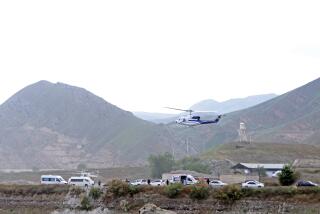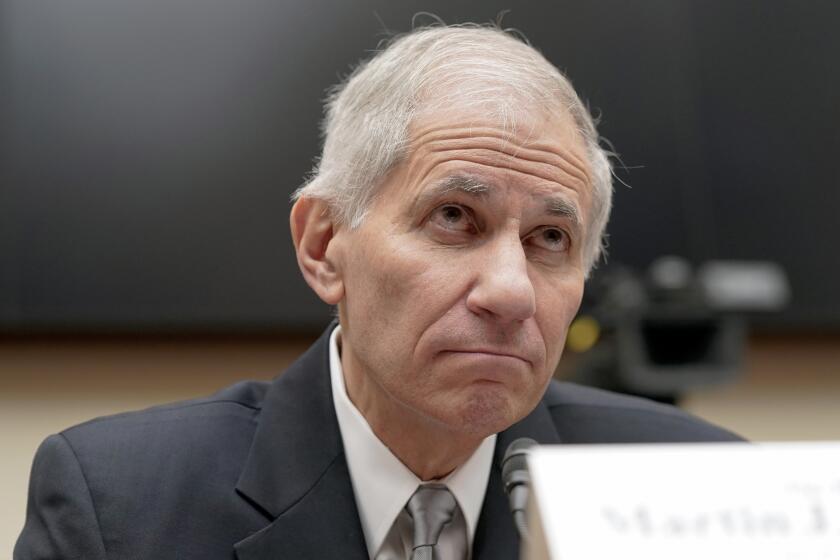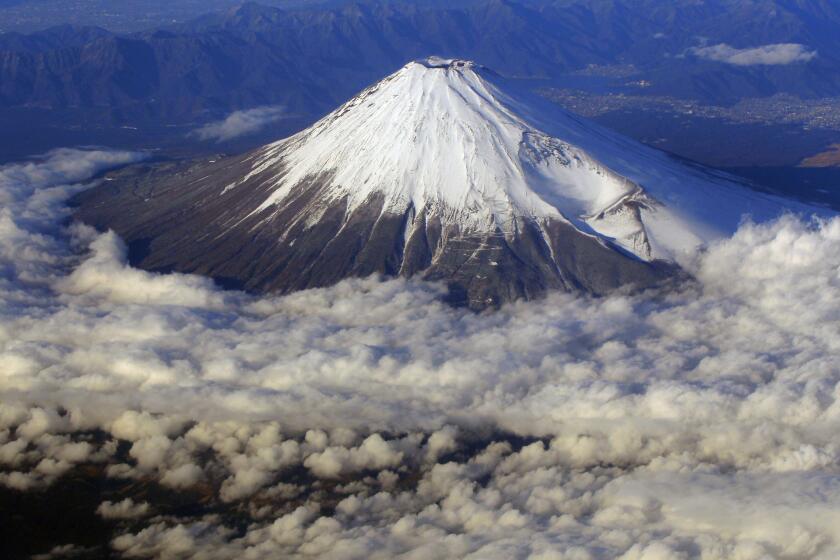Plane Search Shifts to Southwest Airstrips
As searchers scoured central Colorado’s Rocky Mountains on Tuesday for signs of a pilot who disappeared with an attack bomber 14 days ago, Air Force officials were inspecting airstrips across the southwest to make sure the plane wasn’t stashed in a hangar.
But as one of the largest and most costly searches for a military plane in U.S. history entered its third week, the Air Force was no closer to locating 32-year-old Capt. Craig Button or his twin-engine, $9-million A-10 Thunderbolt.
The cost of dispatching rescue teams--on the ground and in the air--has reached $740,000, or about $50,000 a day, Air Force officials said at a news conference, where the mood was one of exasperation.
Still, they said the effort would continue as long as there is hope of finding the plane that was headed for a bombing range in southern Arizona on April 2 when it mysteriously ended up 800 miles off course.
“We have completed an examination of every airstrip along the plane’s flight path--about 140 of them,” said Air Force Capt. Mike Richmond. “We didn’t find the plane.”
Radar imagery and visual accounts suggest that Button probably went down with his jet in inclement weather on the western flanks of nearby 12,467-foot New York Mountain--about an hour and 40 minutes after he broke out of a three-plane formation over Arizona’s Superstition Mountains.
But Air Force officials are not ruling out the possibility that Button might have disabled a manually operated beacon in his ejection seat and secretly bailed out over the snow-covered mountains.
Of particular concern: the fate of the plane’s four 500-pound general purpose bombs and 575 rounds of 30-millimeter cannon ammunition.
On Tuesday, the search focused on about a dozen possible crash sites 20 miles south of the Vail ski resort. Air Force officials sent a ground team to one of those locations, which was characterized by a curious surface depression.
Those searchers came up empty-handed after plodding through the heavy snow with metal detectors for several hours, Air Force officials said.
In the meantime, Army National Guard helicopters and at least seven single-engine Colorado Civil Air Patrol planes flown by volunteers have conducted 200 sorties here over the past week. Among those volunteers is Vic Hauser, who on Tuesday eyeballed the granite spires, sheer cliffs and snowslides girdling New York Mountain from the cockpit of a Cessna 182.
“We’re looking for sheared treetops, blackened patches of snow, odd depressions, debris,” Hauser said, making a wide turn through the turbulent air over the mountain. “Trouble is, it has snowed almost every night since we think he went down. We may not see that plane until the snow melts in August.”
A few days ago, the search was joined by satellites and U-2 and SR-71 Blackbird reconnaissance aircraft, which produced a wealth of radar and photographic intelligence used to help narrow the possible crash site.
That data is being analyzed by a team of experts, said Lt. Gen. Frank Campbell of Davis-Monthan Air Force Base in Tucson--where Button’s flight originated.
“We will not constrain anything the team does,” Campbell said. “The team will take all of the evidence we have and see if we are still on the right track with our search efforts here.”
Warning that even the nation’s most sophisticated surveillance hardware can be “blinded” by pine trees, ravines and heavy snow, Campbell said that the investigation is also relying on reports provided by dozens of potential eyewitnesses.
One witness was recently taken back to a mountain area where he had reported seeing “a glow” nearly two weeks ago, authorities said.
Button’s twin-engine bomber was fully fueled, loaded and bound for a training session at the Barry M. Goldwater bombing range in southern Arizona when it disappeared from radar screens.
Authorities have said that Button had been ordered to switch off his plane’s transponder while flying in a three-plane formation to help reduce confusion by radar tracking the aircraft.
But eyewitness accounts indicate that Button was apparently in control of the plane throughout his errant flight to central Colorado.
After the plane is located, the investigation will center on what motivated Button to veer off the path.
“What we’ve got is a mystery right now,” said Air Force Capt. Chuck Mitchell, an A-10 flight instructor at Davis-Monthan. “At this point, all we want to do is make sure we’ve exhausted every opportunity to find the pilot and his plane.
“But this terrain is like the moon with snow and trees,” he added. “And that is complicating the search.”
Civil Air Patrol pilot Roger MacDonald put it another way.
“These mountains are spectacularly rugged, but they are also pretty killers,” he said at the Air Force’s command post at Eagle County Regional Airport. “We hunt for those who don’t respect our mountains.”
More to Read
Start your day right
Sign up for Essential California for news, features and recommendations from the L.A. Times and beyond in your inbox six days a week.
You may occasionally receive promotional content from the Los Angeles Times.







